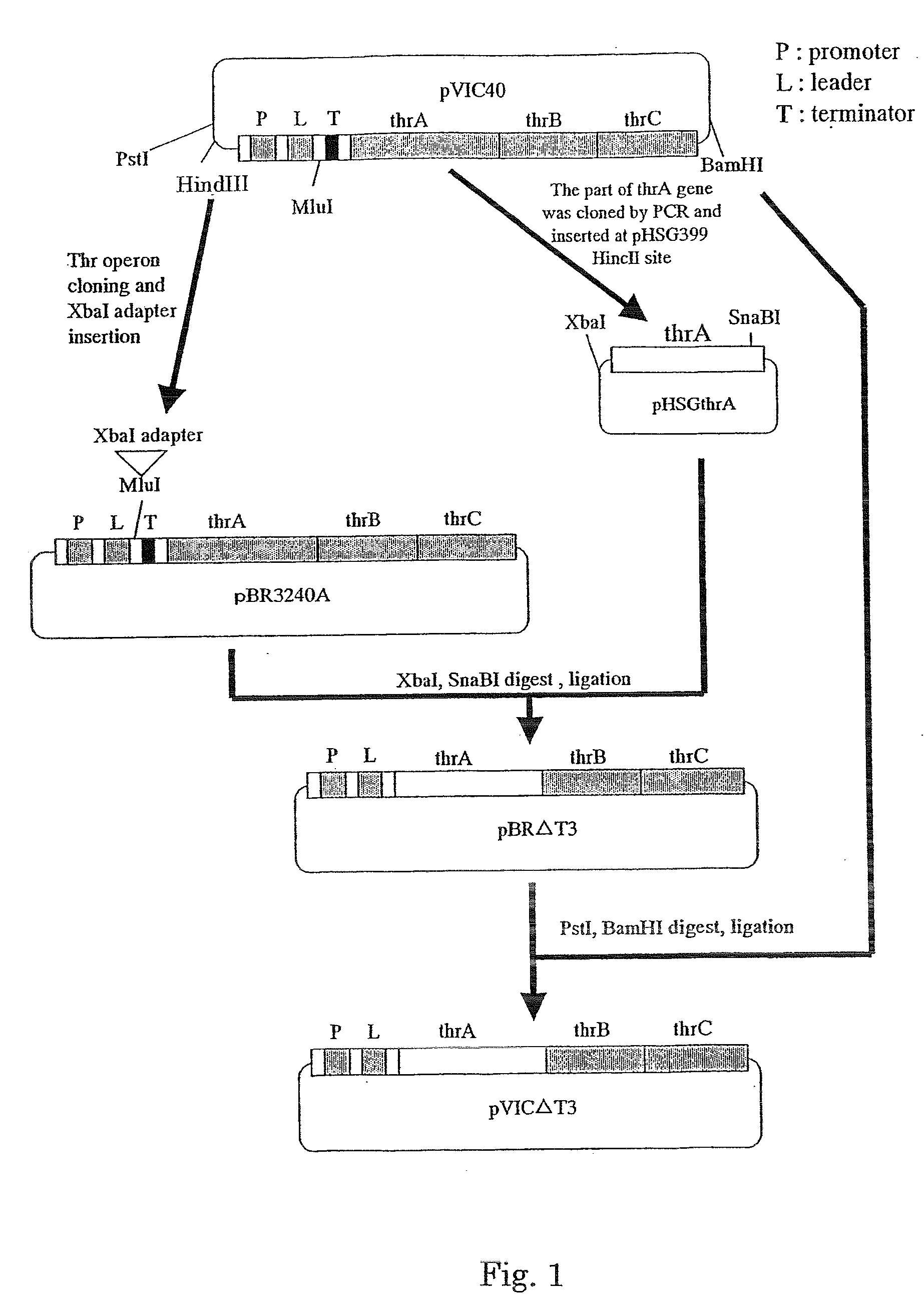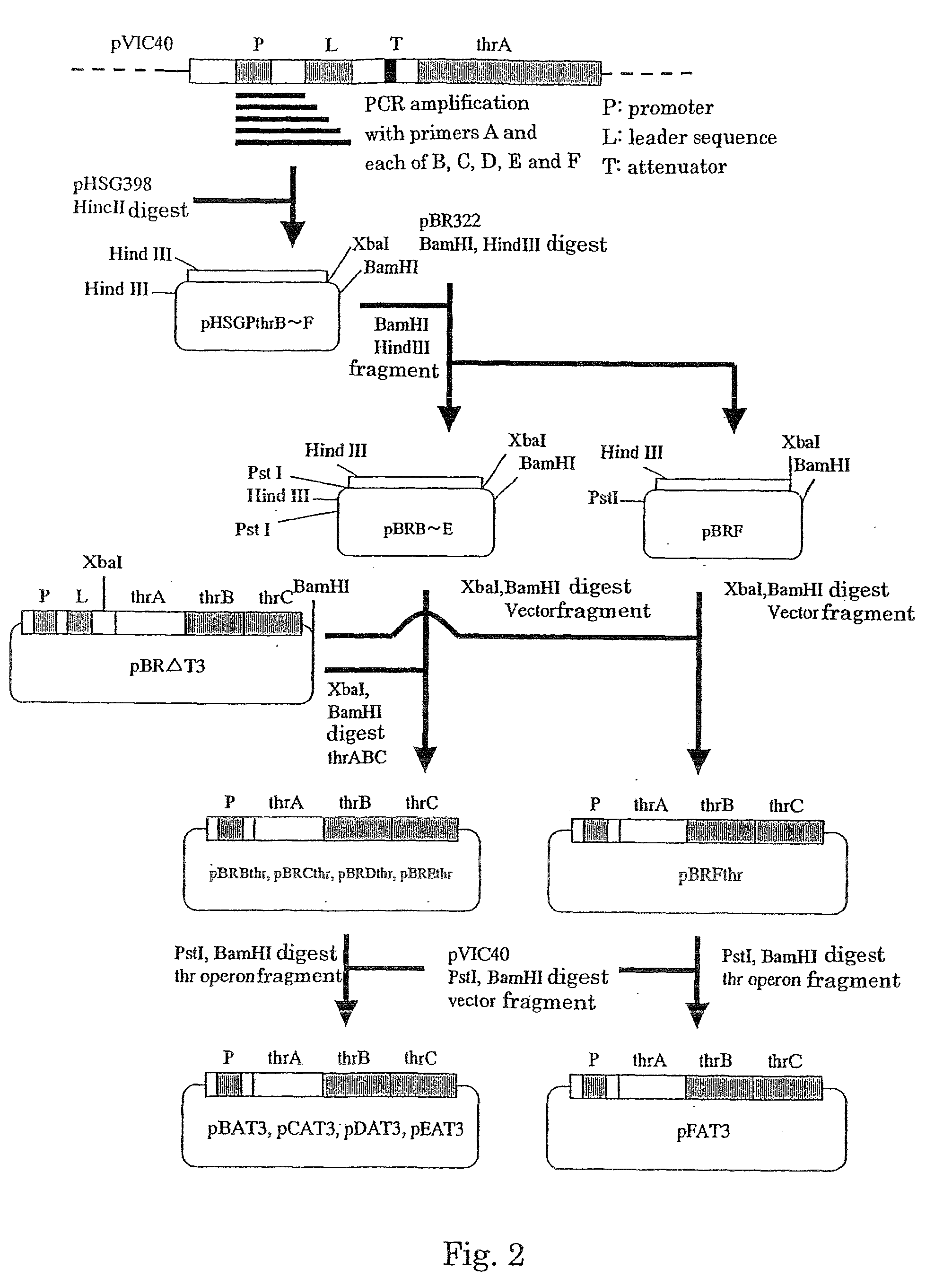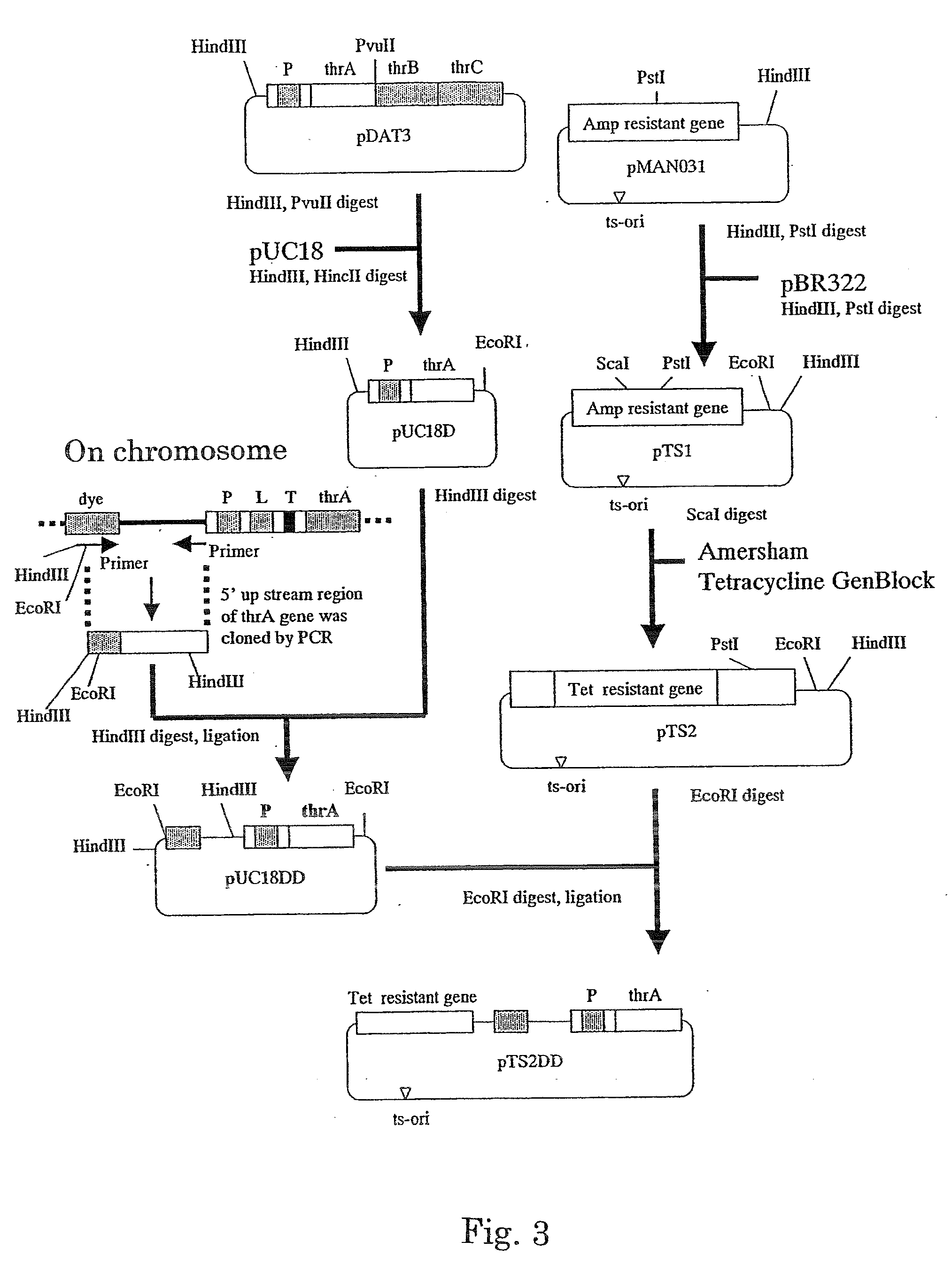Method for producing l-amino acid by fermentation
a technology of lamino acid and l-amino acid, which is applied in the direction of biochemistry apparatus and processes, bacteria based processes, microorganisms, etc., can solve the problems of insufficient expression of threonine operon and difficult to obtain maximum and stable expression, so as to enhance the threonine biosynthetic pathway and improve the ability of a bacterium
- Summary
- Abstract
- Description
- Claims
- Application Information
AI Technical Summary
Benefits of technology
Problems solved by technology
Method used
Image
Examples
example 1
Construction and Evaluation of a Strain Harboring a Plasmid for Amplification of Threonine Operon from which the Attenuator is Removed
[0089] Preparation of a Plasmid for Removal of Attenuator
[0090] The plasmid pVIC40 which is autonomously replicable in Escherichia coli and carries the threonine operon (International Patent Publication in Japanese No. 3-501682) was digested with the restriction enzymes HindIII and BamHI to obtain a fragment of about 6 kbp containing the threonine operon. Then, pBR322 (purchased from Takara Bio) was digested with the restriction enzymes HindIII and BamHI, and the aforementioned fragment of about 6 kbp containing the threonine operon was inserted into the digested pBR322 to obtain pBRT3240A. This pBRT3240A was treated with MluI, and an adapter having the restriction enzyme XbaI recognition site, which was obtained by hybridizing the oligonucleotide shown in SEQ ID NO: 8 and a complementary strand thereof, was inserted into the MluI site of pBRT3240A ...
example 2
Construction and Evaluation of a Strain having a Threonine Operon from which a Different Segment of Sequence Including the Attenuator and Leader Sequence is Removed
[0100] Construction of a Plasmid for Removal of the Attenuator and the Leader Sequence
[0101] As described above, the attenuation caused by addition of isoleucine could not be released as a result of the removal of the attenuator. Therefore, removal of not only the attenuator, but also the leader sequence, was attempted. First, PCR was performed by using pVIC40 as a template to obtain a fragment having a promoter and the subsequent region. PCR was performed by using the oligonucleotide shown in SEQ ID NO: 9, which is complementary to a sequence located in a region upstream to the promoter, and any of the oligonucleotides having the sequences of SEQ ID NOS: 10 to 14. Each of the obtained DNA fragments was purified in a conventional manner and ligated to pHSG398 (Takara Bio), which had been digested with HincII. Thereby, a...
example 3
Construction of a Strain in which Attenuator and Leader Sequence are Removed from its Chromosomal Threonine Operon and Evaluation of the Threonine Production of the Strain
[0112] Construction of thrC Gene-Introduced TDH6 Strain
[0113] The attenuation-released type of sequence derived from the plasmid pDAT3 was introduced into a chromosome, and the effect thereof was determined. The TDH6 strain, an L-threonine-producing strain, lacks the thrC gene, which encodes threonine synthase. Therefore, TDH6 strain having a wild-type thrC was obtained by a conventional method using P1 transduction by using a Escherichia coli wild type W3110 strain (ATCC 27325) as a donor bacterium.
[0114] Specifically, this strain was obtained as follows. A culture of Escherichia coli W3110 strain and P1 phage dilution were added together to a soft agar medium maintained at a certain temperature, and the medium was spread over an LB plate. After the medium solidified, the cells were cultured at 37° C. for 6 to ...
PUM
| Property | Measurement | Unit |
|---|---|---|
| Density | aaaaa | aaaaa |
| Density | aaaaa | aaaaa |
| Density | aaaaa | aaaaa |
Abstract
Description
Claims
Application Information
 Login to View More
Login to View More - R&D
- Intellectual Property
- Life Sciences
- Materials
- Tech Scout
- Unparalleled Data Quality
- Higher Quality Content
- 60% Fewer Hallucinations
Browse by: Latest US Patents, China's latest patents, Technical Efficacy Thesaurus, Application Domain, Technology Topic, Popular Technical Reports.
© 2025 PatSnap. All rights reserved.Legal|Privacy policy|Modern Slavery Act Transparency Statement|Sitemap|About US| Contact US: help@patsnap.com



